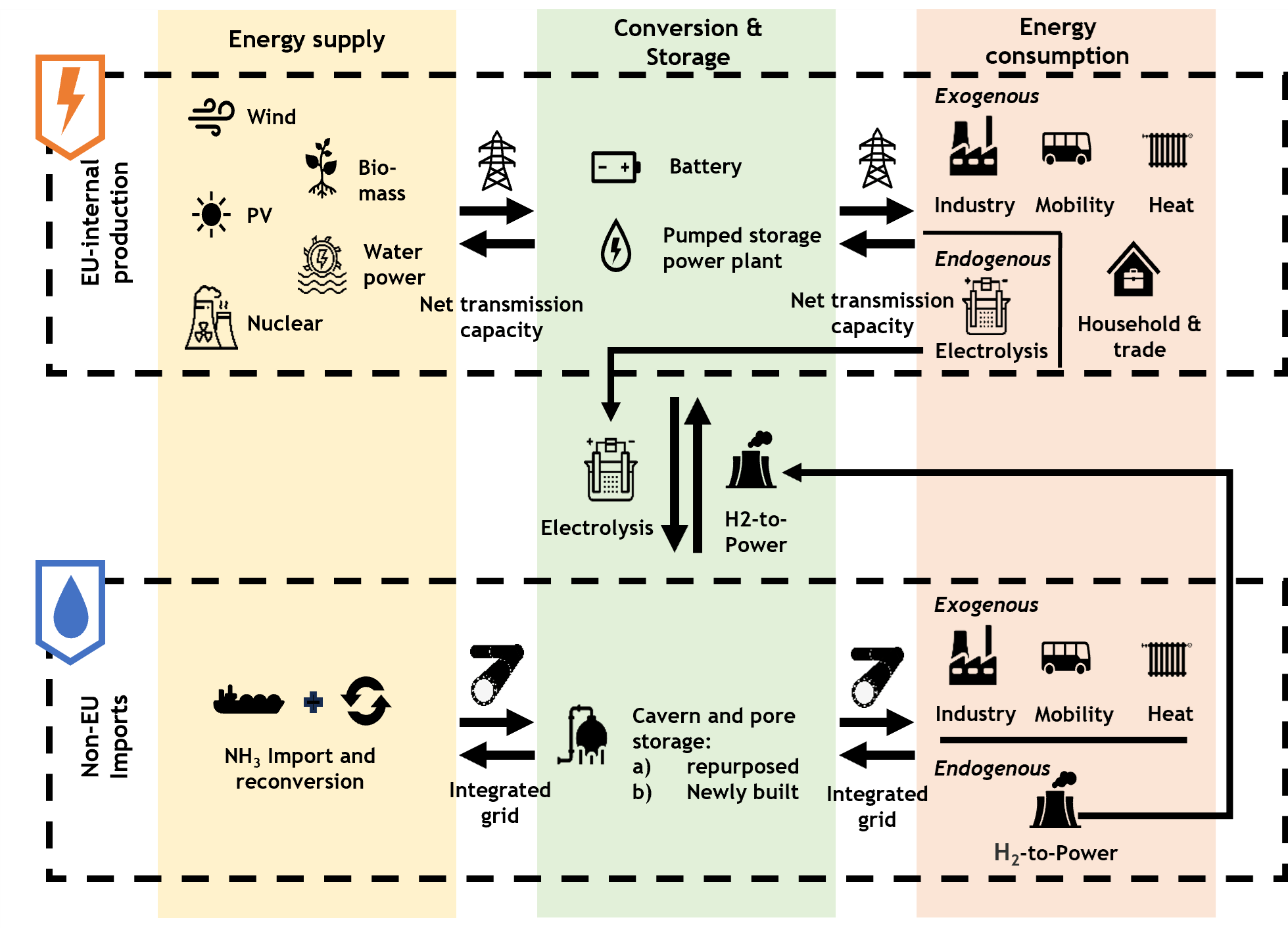HYEBRID (Hydrogen and Electricity market model with broad representation of weather variability and Import Decisions) is a linear simulation model that optimizes investment and deployment decisions in the European electricity and hydrogen market.
The model minimizes the total costs of the energy system, including capacity-related fixed costs and variable generation costs. It enables an integrated view of the hydrogen and electricity sectors and their interdependencies.
HYEBRID covers the EU Member States (excluding Bulgaria, Malta and Cyprus) as well as the UK, Norway and Switzerland. It models the development of the energy system in sample years up to the year 2050 in order to model scenario-based paths to climate neutrality. The model uses a two-stage optimization approach:

HYEBRID models the entire potential hydrogen sector in Europe, including domestic hydrogen production through electrolysis, underground storage in salt caverns and pore storage facilities, the import of hydrogen outside Europe via import terminals or pipelines and intra-European transportation. The demand for hydrogen in end-use sectors such as industry, mobility and buildings and in the electricity sector is also comprehensively modeled. The interactions between the electricity and hydrogen sectors are optimized endogenously in order to achieve the best possible synergies between the two markets.
Weather variability
HYEBRID explicitly takes into account the weather-related volatility that affects the availability of renewable energy and temperature-dependent demand in the electricity and hydrogen sectors. The characteristics of 35 historical weather years are used to investigate the effects of weather-related volatility on the operating decisions of the two sectors. This enables a realistic and robust identification of investment and deployment decisions.
Applications
HYEBRID was developed in a research project and has already been successfully used in consulting projects at the EWI and is being continuously developed further. In a current research project, the model is being expanded to include the possibility of stochastic mapping of significant uncertainties in a future energy system.